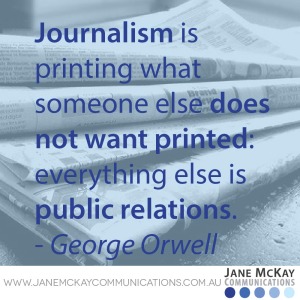Dream big start small with PR: 5 key things to consider before embarking on a DIY PR campaign
 As entrepreneurs, we all dream big. Without aspiration and self-belief we would not be where we are today: faced with marketing a business we know is fabulous to a world that doesn’t know we exist (yet).
As entrepreneurs, we all dream big. Without aspiration and self-belief we would not be where we are today: faced with marketing a business we know is fabulous to a world that doesn’t know we exist (yet).
Few marketing tools are as impactful as an engaging public relations campaign. Targeted at the right media outlet, a simple media release can garner huge exposure for your business, develop meaningful connections with your target audience and boost your bottom line.
With minimal outlay, the rewards of PR can be huge but there are no guarantees. Here are five key factors to consider before embarking on your campaign.
- Know your audience
As with all marketing, audience is key. Not only who you’re ultimately talking to (the outlet’s audience) but the journalist you’re pitching to. Make sure you’re contacting the right person; if you’re pitching a lifestyle product, for example, find the health and lifestyle journalist and communicate directly with them.
- Be newsworthy
Journalists receive literally hundreds of media releases a week. Find your “unique selling proposition” and turn it into a relevant, engaging, interesting story. Journos love stories that are transformational, relatable and human.
- Be relevant
While it’s tempting to target the big media outlets, you’re more likely to find receptive editors and members of your target audience at specialist publications, websites, etc. Think about your own inspiration and research who they are, where they go, what they do and who they are talking to. Your target audience might be where you are already, you just haven’t spoken to them yet!
Tailor your media release to each outlet you’re targeting: while a blanket media release might save you time, failing to take the time to make your release relevant to the target publication’s audience will diminish its impact.
- Realise your capacity
It’s a great idea to hit multiple media outlets at one time, if you get one nibble, great; if you get several, fantastic. Realise, though, that these stories should convert into sales for your business. Make sure you have a plan in place to grow your business while maintaining the customers you already have.
- Pick your time
Journalists are busy people and newsrooms tend to become more frenetic as the day wears on: send your release in the morning and if you don’t get a response, send a follow up email in a few days’ time or make a phone call but don’t become a nuisance!
Final points to consider:
- Build a PR component into your business plan. Work out milestones, events and launches that can be leveraged for coverage: strategically-timed media will build your exposure and audience.
- Share your media coverage on your social media channels to enhance your reach.
- Start small and work up to the bigger fish in your niche’s pond once you’ve had a few media wins.
- Measure the impact of your media coverage. Note publication dates in your analytics to gain more insight into what works for your audience.
If you are reading this and feeling completely overwhelmed, are not confident in your writing abilities or you’re simply too busy to even think about it, ask an expert. While I wouldn’t recommend entering into a huge retainer with a major PR firm, a specialist small marketing/PR business can help you get started.
 “I have a lot of work to do today,” I sighed to my husband this morning.
“I have a lot of work to do today,” I sighed to my husband this morning.